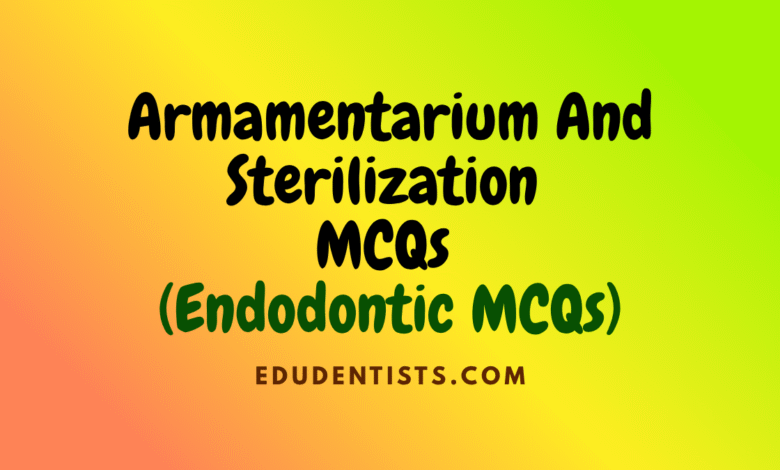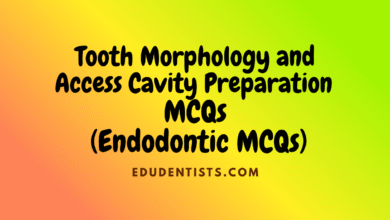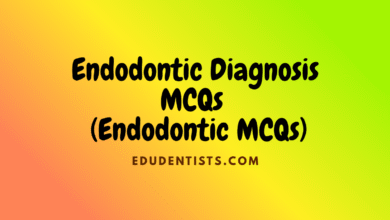Endodontics MCQs
Armamentarium And Sterilization MCQs (Endodontic MCQs)
Armamentarium And Sterilization MCQs (Endodontic MCQs)

Armamentarium And Sterilization MCQs _ Endodontic MCQs
Armamentarium And Sterilization MCQs _ Endodontic MCQs
- Disinfection is the killing of:
A. All life forms
B. Only pathogens
C. Most life forms but not spores
D. All bacteria but not all viruses
E. Selected pathogenic bacteria and all viruses - Biofilm that forms in dental water lines:
A. May partly originate in municipal water supplies
B. Rapidly removed by daily flushing of the lines
C. Not accurately identified by culturing
D. Cannot form if any movement of water occurs in the lines - Which is a consideration in the sterilization of files:
A. New files need not be sterilized; they are sterilized by the manufacturer.
B. Preferably, debris is not allowed to dry on files.
C. Files predictably are sterilized by bead or salt sterilizers between patients.
D. Used files can be sterilized by dropping them into disinfectant after use. - Which is the best way to clean dental instruments before sterilization:
A) Ultrasonic cleaning in a perforated basket
B) Hand scrubbing using a brush and heavy rubber gloves
C) Rinsing under a forceful water spray
D) Soaking overnight in soapy water - Steam sterilization is achieved when the load has reached which of the following temperature:
A. 250 C (482 F) for 15 minutes
B. 250 F (121 C) for 10 minutes
C. 250 C (482 F) for 30 minutes
D. 250 F (121 C) for 30 minutes - Which of the following is an advantage of a rapid-steam autoclave over a traditional autoclave:
A. Does not corrode steel instruments
B. Safely sterilizes all types of materials
C. Does not require air drying of instruments at the end of the cycle
D. Has a shorter sterilization cycle - Which of the following statement(s) accurately describes a chemical vapor sterilizer
A. It uses a reusable chemical.
B. It requires adequate ventilation in the area where it is used.
C. It achieves sterilization when heated to 270 F (132 C) at 20psi for 10 minutes.
D. It does not destroy heat-sensitive materials. - Which of the following is an approved method of reducing the number of microorganisms in water output from dental units
A. Filters at the water source
B. Flushing the water line before attaching it to the handpiece or syringe
C. Retrograde (i.e., reverse) flushing of all water lines
D. Careful sterilization of water lines in handpieces and syringes between patients
E. Installation of sterile water delivery systems - Gutta-percha is best sterilized by which of the following:
A. Immersion in full-strength sodium hypochlorite
B. Immersion in rubbing alcohol
C. Dry heat
D. Bead sterilizer - Contaminated droplets,are:
A. Not produced during endodontic procedures
B. Produced only when accessing with a high-speed handpiece into an infected pulp
C. Reduced when a rubber dam is used
D. Cannot pass into a mask wearers respiratory tract if the mask is sealed at the edges - Regulated medical waste in the dental office includes
A. Used gloves and items that can break the skin
B. Only needles, scalpel blades, and files
C. Any items that can break the skin
D. Any items that have been in contact with saliva or blood (or both) - Prions, a cell surface glycoprotein,
A. Are not predictably sterilized by conventional techniques
B. Are less likely to be found on stainless steel files than on the nickel-titanium type
C. Are eliminated by autoclaving at increased pressures at similar temperatures for similar times as with conventional sterilization techniques.
D. Cannot be killed with any known chemical treatment





